Literary rating: ★★★½
Kick-butt quotient: ☆☆☆
“Fear not,” she retorted with animation, “that I will suffer the indignity of capture at their hands. My dead body they may find, but the spirit of the Rani of Jhansi will have carried more than one of them to an accounting before the great tribunal of justice.”
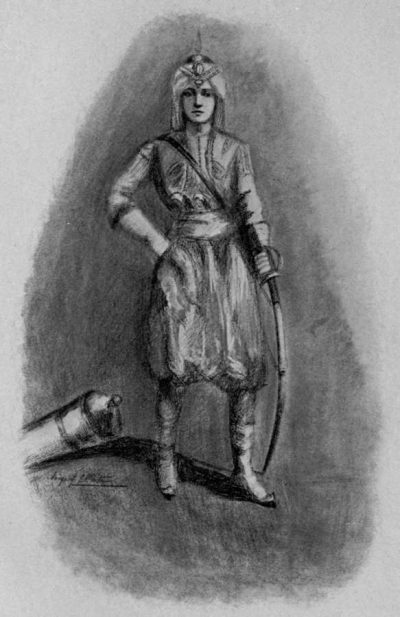
“With the exception of a white turban, she was attired in a blood-red uniform from head to foot.”
I’m surprised how sympathetic a portrayal this novel has of Queen Lachmi Bai (as it’s spelled here), considering when it was published. For this came out in 1901, a point at which India was still firmly under British rule – heck, Queen Victoria was on the throne as the year began. Yet Lachmi Bai is very much the heroine, portrayed respectfully, to an almost idealized degree. For instance, it begins with the rebel massacre of British troops and their families at Jhansi. Yet this is depicted as being in explicit defiance of her command to secure them as prisoners.
It’s a mix of historical fact and pure speculation, the latter being particularly evident in a fairly platonic love triangle between the Queen, and two of her (entirely fictitious, I suspect) lieutenants, the Hindu Prasad Singh and the Muslim Ahmad Khan. The latter is the villain of the piece. His blood-lust is responsible for the massacre, and he is depicted in phrases such as “the expression of his mouth and chin denoted cruelty and treachery—the latter, perhaps, an accomplishment rather than a failing to the Oriental mind.” [While there is an argument to be made here for Islamophobia in his depiction, given the highly positive way Lachmi Bai and Prasad are portrayed, accusations of general “racism” seem lazy]
However, even he spends much of the middle portion working faithfully in support of the queen’s mission to free her country from the British. Speaking of whom, there is one scene early in the book told from the point of view of the Empire. But thereafter, they are largely referred to as “the Foreigners,” again demonstrating the Indo-centric viewpoint of the novel. While they ultimately prevail, this is not reported with any sense of triumph. Indeed, White is remarkably prophetic, Lachmi Bai saying, almost with her final breath: “Not forever shall their horsemen ride triumphantly through the land. A day will come when their law shall be no longer obeyed, and our temples and palaces rise anew from their ruins.” 46 years later, India did indeed become an independent country.
“But even if defeat is again the will of God, if die we must; is it not better to perish as warriors should, in a feat of arms upon which the eyes of our enemies will gaze with marvel, than as wild beasts hunted through the jungle?”
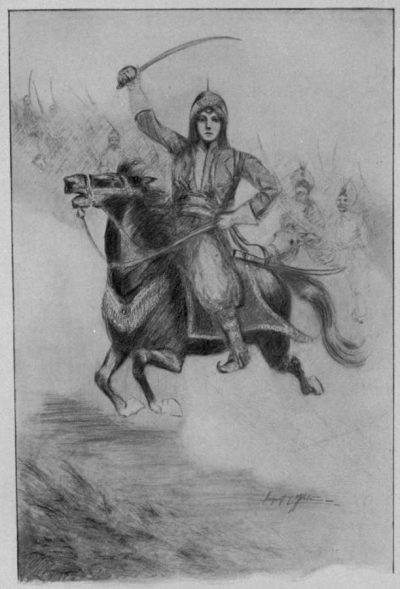
“Her horse leaped forward, straight for Sindhia’s guns.”
The story told here bypasses her entire life and marriage, joining proceedings after she has already become a widow. In the early stages, Lachmi Bai also takes a back seat, with the storyline revolving around Ahmad and Prasad’s rivalry. The former manipulates the latter into believing the Queen is having an affair with young officer Dost Ali, and also the Queen into believing Prasad is plotting against her. This leads to his exile for the middle of the book, until returning after the fall of Jhansi, as the Queen is making her escape from the city. Though I must say, Ahmad’s eventual fate is rather underwhelming, in a “Cersei Lannister” kind of way. Without getting too spoilery, hopes he would meet the point of Lachmi Bai’s sword proved unfulfilled.
The latter half focuses more on the Queen, as fate deals her cards both good and bad. It’s made clear the military reverses suffered are not her fault, or in any way reflect her bravery. Her commanders are to blame, along with a tendency for her forces to break under pressure. Yet, as the quote above says, she would rather have a glorious death than a subservient life. The comparisons to Jeanne D’Arc are understandable, and made explicit: “A second Jeanne D’Arc, as valiant in battle, more subtle in council than the Maid of Orleans, moved by the same passionate love for her country, had cast in their teeth a wager of defiance, to stand until either they were driven from her state, or she had perished.”
Of course, we know how the story ends, and White gives Lachmi Bai the heroic send-off she deserves: “She drew the folds of a shawl over her face to hide her death agony, and again lay down. The blackness of night grew deeper, the silence more intense. Presently, strange, warrior forms seemed to appear from the unknown and filled the Rani’s tent. One supremely beautiful figure, in dazzling raiment, came forth to enfold the dying woman in her arms.” It’s surprisingly touching, and a decent end to a story which has survived the passage of almost 120 years better than I expected
Author: Michael White
Publisher: J. F. Taylor & Company, available as an e-book for free from Project Gutenberg.





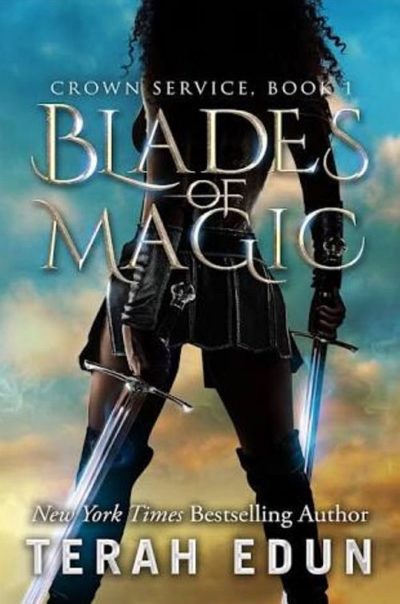 Seventeen-year-old Sarah Fairchild and her family have become persona non grata after her father’s execution by the Algardis Empire. He was a renowned fighter and commander, so his alleged desertion makes no sense to Sarah. Regardless, his wife and daughter are now pariahs to the local community. Even with Sarah’s unparalleled fighting skills, both natural and magical, her employment opportunities are limited, to say the least.
Seventeen-year-old Sarah Fairchild and her family have become persona non grata after her father’s execution by the Algardis Empire. He was a renowned fighter and commander, so his alleged desertion makes no sense to Sarah. Regardless, his wife and daughter are now pariahs to the local community. Even with Sarah’s unparalleled fighting skills, both natural and magical, her employment opportunities are limited, to say the least.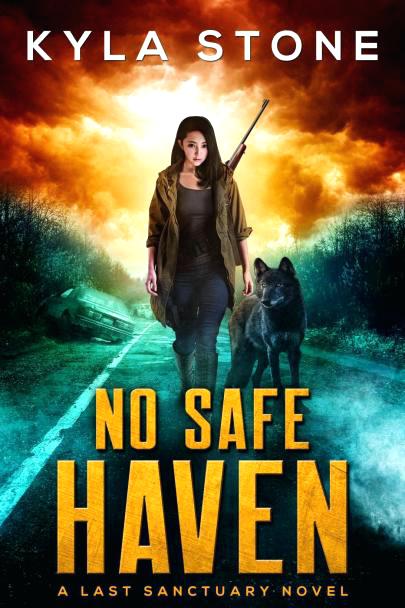 I’ve read enough action heroine novels now to be more than familiar with the tropes of the genre. For example, I can do without ever reading another novel which puts fantasy creatures like elves and magic into a modern-day setting. The zombie apocalypse is another scenario which has been done to death. I mean, we even abandoned The Walking Dead, and watching that was pretty much muscle memory. However, this novel proves there’s still life in the genre, offering some interesting twists on it.
I’ve read enough action heroine novels now to be more than familiar with the tropes of the genre. For example, I can do without ever reading another novel which puts fantasy creatures like elves and magic into a modern-day setting. The zombie apocalypse is another scenario which has been done to death. I mean, we even abandoned The Walking Dead, and watching that was pretty much muscle memory. However, this novel proves there’s still life in the genre, offering some interesting twists on it. Zemlya is a gigantic closed city, in the middle of the Arctic tundra, its ten million inhabitants entirely cut off from the outside world. Indeed, there may not be an outside world: no-one knows, for the authorities hunt down and terminate anyone who tries to leave. One of their hunters is Kate
Zemlya is a gigantic closed city, in the middle of the Arctic tundra, its ten million inhabitants entirely cut off from the outside world. Indeed, there may not be an outside world: no-one knows, for the authorities hunt down and terminate anyone who tries to leave. One of their hunters is Kate 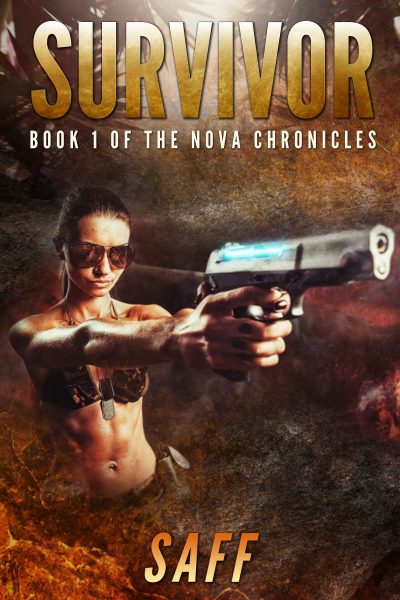 Nova is a bounty hunter, smuggler and generally survivor of life in the grey areas of legality. In need of a quick buck to fix her space-ship, she takes on the hunt for a couple of escaped fugitives. She locates them working in an archaeological dig being run by the Confederacy – which is odd, since the planet in question was supposedly never inhabited. An unfortunate translation error ends up helping unleash a long-buried race of reptiloid extra-terrestrials, the Ancients – a species with both the inclination and the ability to wage genocidal war on the rest of the galaxy. And Nova is the only one left who can stop them.
Nova is a bounty hunter, smuggler and generally survivor of life in the grey areas of legality. In need of a quick buck to fix her space-ship, she takes on the hunt for a couple of escaped fugitives. She locates them working in an archaeological dig being run by the Confederacy – which is odd, since the planet in question was supposedly never inhabited. An unfortunate translation error ends up helping unleash a long-buried race of reptiloid extra-terrestrials, the Ancients – a species with both the inclination and the ability to wage genocidal war on the rest of the galaxy. And Nova is the only one left who can stop them. When you think of drugs, terrorism and South America, Colombia probably comes first to mind, thanks to Pablo Escobar and his cartel pals. However, it’s far from the only country in the region with a troubled history. Peru has had its fair share of strife: it produces virtually as much cocaine, and the Marxist guerillas of the Shining Path movement fought a long, bloody war against the government through the eighties. It’s during this time that the novel begins. Young girl Nina has her father killed by soldiers hunting the guerillas in her rural village, and her brother Miguel vanishes to join the Shining Path.
When you think of drugs, terrorism and South America, Colombia probably comes first to mind, thanks to Pablo Escobar and his cartel pals. However, it’s far from the only country in the region with a troubled history. Peru has had its fair share of strife: it produces virtually as much cocaine, and the Marxist guerillas of the Shining Path movement fought a long, bloody war against the government through the eighties. It’s during this time that the novel begins. Young girl Nina has her father killed by soldiers hunting the guerillas in her rural village, and her brother Miguel vanishes to join the Shining Path. Vic Stratton
Vic Stratton Earlier this year, because he knew that I’d greatly liked the two previous Sabel Security novels, my Goodreads friend Seeley James gifted me with the e-book editions of all of the remaining five. This was just an act of friendly generosity, with no actual request for reviews; but I’m glad to treat them as review copies, and (as always) to review them fairly on their merits. This book’s merits earn it very high marks, which came as no surprise to me!
Earlier this year, because he knew that I’d greatly liked the two previous Sabel Security novels, my Goodreads friend Seeley James gifted me with the e-book editions of all of the remaining five. This was just an act of friendly generosity, with no actual request for reviews; but I’m glad to treat them as review copies, and (as always) to review them fairly on their merits. This book’s merits earn it very high marks, which came as no surprise to me!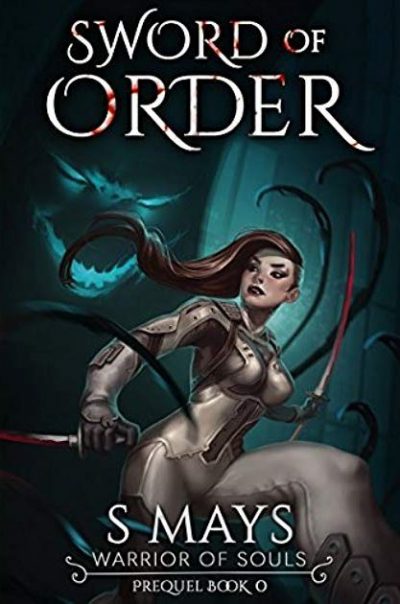 Book 0 in the series? It seems a little odd, as this obviously leads in to the “first” book – Curse of Souls, published in September 2017 – yet Sword came out just three months later. Reading the synopsis, it seems as if Curse may be focused on a different character: college student Sverre Walker, who encounters Jessica Luvkrafft, warrior for the Order of Mankind. Sword is the story of how Jessica became that warrior.
Book 0 in the series? It seems a little odd, as this obviously leads in to the “first” book – Curse of Souls, published in September 2017 – yet Sword came out just three months later. Reading the synopsis, it seems as if Curse may be focused on a different character: college student Sverre Walker, who encounters Jessica Luvkrafft, warrior for the Order of Mankind. Sword is the story of how Jessica became that warrior.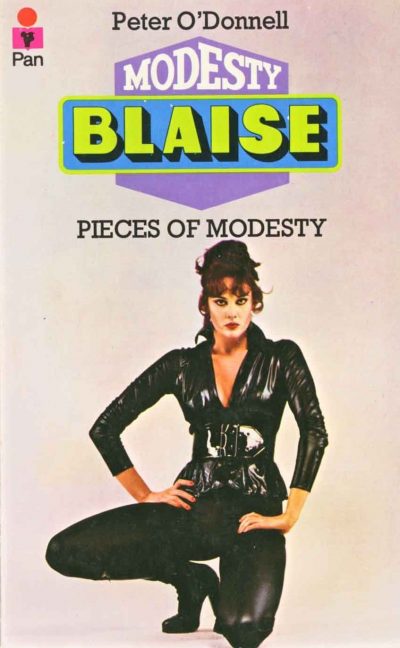 While this is the sixth installment of the series, because the stories are strictly episodic and not connected to each other, and are set at various times in the 60s, they don’t really have to be read after the first five novels to be understood and appreciated. (It would probably be best to read the first novel first, just to provide a foundation.) In a couple of stories, references are made to events, and characters reappear, which are probably drawn from the novels; but any information about past events that we need to know is supplied. Five of them are written in third person; “I Had a Date with Lady Janet” is unique in that Willie narrates it in first person, which helps to develop his character more deeply. The settings are mostly British or continental European, with one tale taking place in South America. All six adventures involve Modesty in a wide variety of situations, which illustrate various aspects of her personality and abilities; that may explain the collection’s odd title. (Don’t worry –Modesty is not dismembered!)
While this is the sixth installment of the series, because the stories are strictly episodic and not connected to each other, and are set at various times in the 60s, they don’t really have to be read after the first five novels to be understood and appreciated. (It would probably be best to read the first novel first, just to provide a foundation.) In a couple of stories, references are made to events, and characters reappear, which are probably drawn from the novels; but any information about past events that we need to know is supplied. Five of them are written in third person; “I Had a Date with Lady Janet” is unique in that Willie narrates it in first person, which helps to develop his character more deeply. The settings are mostly British or continental European, with one tale taking place in South America. All six adventures involve Modesty in a wide variety of situations, which illustrate various aspects of her personality and abilities; that may explain the collection’s odd title. (Don’t worry –Modesty is not dismembered!) “Salamander Four” is the only selection here that indicates Modesty’s openness, on occasion, to uncommitted sex (although there’s no explicit sexual content there, or in any of the stories), but the psychology of it is understandable and she comes across to me as misguided rather than callous and selfish –it’s clear that her intention isn’t knowingly to be hurtful or exploitative. Finally, “The Soo Girl Charity” is the most disturbing of the stories, in that (though without being graphic) it provides a look into the dark reality of the exploitation of women by sexual sadists, and into the even darker reality of what pounded-in cultural brainwashing of females to accept patriarchy and male domination actually does to their psyches. (I didn’t feel that the victim here being Asian indicates racism or cultural stereotyping; I think that simply reflects a reality that, at least in the 60s, traditional rural Asian cultures still tended to promote that kind of brainwashing to a greater degree than Occidental ones –even though the sexism of our culture is bad enough.)
“Salamander Four” is the only selection here that indicates Modesty’s openness, on occasion, to uncommitted sex (although there’s no explicit sexual content there, or in any of the stories), but the psychology of it is understandable and she comes across to me as misguided rather than callous and selfish –it’s clear that her intention isn’t knowingly to be hurtful or exploitative. Finally, “The Soo Girl Charity” is the most disturbing of the stories, in that (though without being graphic) it provides a look into the dark reality of the exploitation of women by sexual sadists, and into the even darker reality of what pounded-in cultural brainwashing of females to accept patriarchy and male domination actually does to their psyches. (I didn’t feel that the victim here being Asian indicates racism or cultural stereotyping; I think that simply reflects a reality that, at least in the 60s, traditional rural Asian cultures still tended to promote that kind of brainwashing to a greater degree than Occidental ones –even though the sexism of our culture is bad enough.)